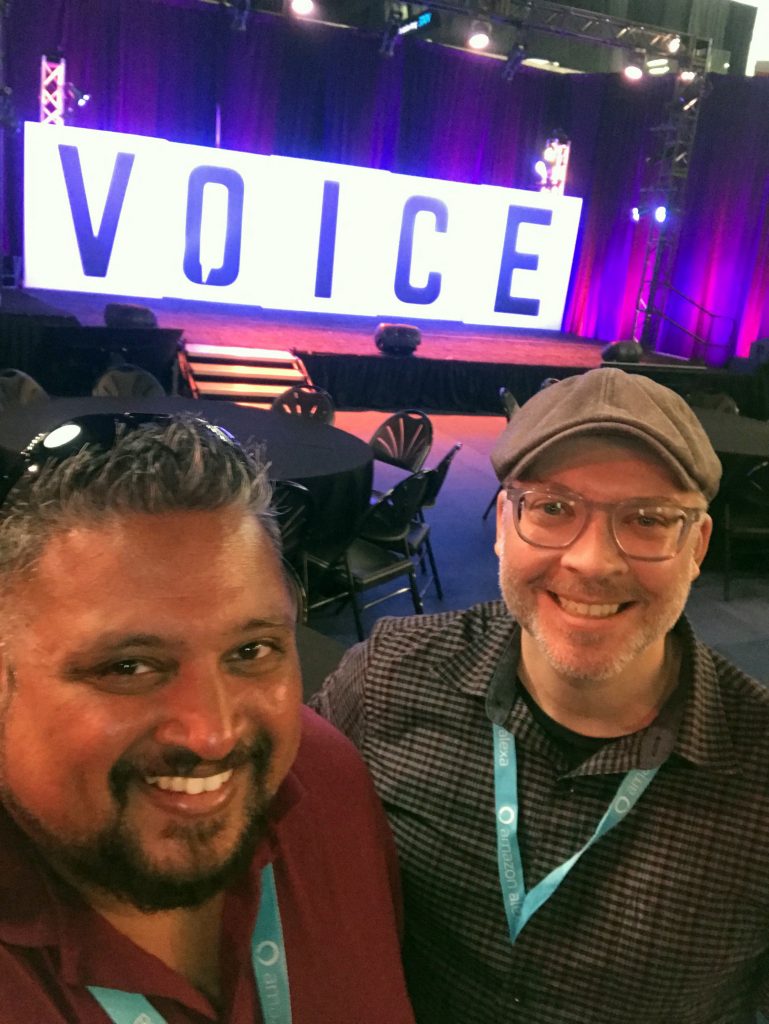THREE TAKEAWAYS FROM THE 2019 VOICE SUMMIT
by Sandeep Jambhekar
In July 2019, Bill Miranda and I attended the annual VOICE Summit on NJIT’s stunning campus in Newark, New Jersey. From security to older adult engagement to building best-in-class voice products, the sessions featured a full array of interesting, timely, and relevant topics.
In the months since the summit, we have been working to integrate voice into Ogilvy Health’s overall approach to Experience Design, helping us deliver successful voice products as a part of our immersive, multichannel offerings.
The rich information provided at VOICE helped reinforce the power of voice interfaces. Here are three takeaways we are actively thinking on:
1. Voice interfaces have the potential to increase empathy through well-planned conversational design.
As we design experiences that interact with humans, voice is unique in that it is a closer paradigm to physical human interaction compared with the visual interfaces.
Emerging research shows that people have a high level of comfort in engaging with voice interfaces in intimate environments, allowing for increased levels of personal interaction.
To effectively execute a successful voice interface, there must be a focus on creating a hyper-personalized experience with the marriage of conversational design, artificial intelligence (AI), and other advances in voice technology.
The addition of AI to voice interfaces helps contextualize the conversation by offering predictive insights, and giving the voice interface an adaptive, conversational nature.
Utilizing natural language processing and neural text-to-speech can also help make the voice interface seem more natural and lifelike, as it helps it understand different speech styles and patterns, such as accents or colloquialisms.
By adopting a voice interface and adding other technologies to enhance its emulation of natural, human conversation, we can deliver truly empathetic and memorable engagements for our healthcare brands.
2. Voice is growing in maturity, with a lot of interest and opportunities in healthcare, but there is still hesitation.
During two healthcare-focused presentations, there was significant discussion about a lack of adoption due to misunderstanding the technology and regulatory fears.
As a strategic partner, it is critical that we help alleviate the fears of implementing this emerging technology. For instance, the fear that AI will make the voice go off-script is simply unfounded.
The voice interface can only stay on script. A well-planned conversational design makes the interface seem to adapt to the conversation, but these are all planned, scripted, and approved engagements. The AI can simply make intelligent connections between parts of the script, or provide other approved, related content.
Clearly explaining complex technologies such as AI, and how they work to enhance the experience, while staying in compliance, is critical to adoption of voice interfaces.
3. Voice is not just another trend, gimmick, or buzzword, especially for older adult engagement.
We are somewhere near the beginning of a voice renaissance where audio can become king again. We may just be heading into a voice-first era.
Voice in the form of radio, telephone, and human conversation has been the forefront of communication far longer than screens have been. Based on a Personality and Social Psychology Review study, between 1979 and 2009, levels of empathy have fallen 48%, and so has human intelligence. Because we are having fewer conversations, we seem to be losing humane attributes.
In healthcare, voice interfaces may not be a primary touchpoint, but will be a critical one as a component of a customer-centric ecosystem of care. This is especially the case with our aging adult community, where in the next 20 to 30 years, the market for older adults will double.
Older adults are much more comfortable with conversations. In fact, my 80-year-old mother always opts for a conversation, whether it is over the phone or in person, over any alternative.
This is because there is a human element to voice, a real connection that can be made if the voice interface is natural, adaptive, and helpful.
In conclusion, voice interfaces have great potential and application in healthcare. When I am challenged by a client to design an interface, I now seriously consider voice over visual, especially for healthcare. With strategic planning and focused conversational design, we can elevate empathy, address regulations, and leverage this technology for our healthcare brands for years to come.
